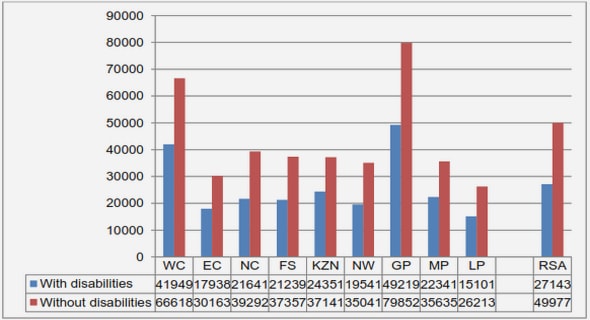(Downloads - 0)
For more info about our services contact : help@bestpfe.com
Table of contents
Partie I. Amélioration d’outils et de méthode de caractérisation des matières organiques exogènes et d’estimation de leur devenir dans les sols
Chapitre 2. Change of the chemical composition and biodegradability of the Van Soest soluble fraction during composting: A study using a novel extraction method
2.1. Abstract:
2.2. Introduction
2.3. Materials and Methods
2.3.1. Composts
2.3.2. Extraction of the Van Soest soluble fraction
2.3.3. A novel alternative fractionation procedure
2.3.4. Elemental composition
2.3.5. Laboratory incubations
2.3.6. Curie-point pyrolysis-gas chromatography-mass spectrometry (Pyrolysis-GC/MS)
2.3.7. Fourier-Transform Infra-Red (FTIR) spectroscopy
2.3.8. Statistical analysis
2.4. Results
2.4.1. Quantification of organic matter fractions obtained using the Van Soest and alternative procedures
2.4.2. Mineralization of organic C in the fractions
2.4.3. Characterization of composts, fractions and residues using pyrolysis-GC/MS
2.4.4. FTIR spectroscopy
2.4.5. Principal Component Analysis (PCA)
2.5. Discussion
2.5.1. Evaluation of the alternative fractionation procedure
2.5.2. Evolution during composting of the chemical nature and biodegradability of extracted organic fractions
2.5.3. Change of the chemical nature and biodegradability of the fractions extracted using the alternative method indicative of changes to the biodegradability of the “soluble” Van Soest fraction during composting
2.6. Conclusions
2.7. References
Chapitre 3. Near infrared reflectance spectroscopy: a tool to characterize the composition of different types of exogenous organic matter and their behaviour in soil
3.1. Abstract
3.2. Introduction
3.3. Materials and Methods
3.3.1. EOM dataset
3.3.2. Chemical and biochemical characterisation of EOM
3.3.3. Stable organic C in EOM
3.3.4. NIRS analysis
3.4. Results and Discussion
3.4.1. Analytical characteristics of EOM
3.4.2. NIRS prediction of the elemental composition of EOM
3.4.3. NIRS prediction of Van Soest biochemical fractions of EOMs
3.4.4. NIRS prediction of EOM-C mineralized during laboratory incubations
3.4.5. NIRS prediction of the stable organic C in EOM
3.5. Conclusions
3.6. References
Partie II. Accumulation de C dans le sol suite à des apports répétés de MOEs: Paramétrage du modèle RothC en vue de simuler le devenir de MOEs dans les sols
Chapitre 4. Carbon accumulation in soil following repeated applications of different organic amendments: distribution within particle size and density fractions and simulation with the RothC model.
4.1. Abstract
4.2. Introduction
4.3. Materials and methods
4.3.1. Qualiagro field experiment
4.3.2. Chemical and biochemical characterisation of EOMs
4.3.3. Soil sampling and C stocks
4.3.4. C inputs from crop residues
4.3.5. Yields of C accumulation
4.3.6. Size and density fractionation of soil organic matter
4.3.7. Simulation of C accumulation in soil with RothC
4.3.8. Simulation of potential sequestration of C through EOM applications
4.3.9. Statistical analysis
4.4. Results and Discussion
4.4.1. Characteristics of the EOMs applied
4.4.2. Evolution of field C stocks after EOM application
4.4.3. Distribution of SOC in size and density fractions following EOM application
4.4.4. Simulation of C stock evolutions using RothC
4.4.5. Extrapolation of RothC simulation
4.4.6. Comparison of particle size fractions and model pools
4.5. Conclusions
4.6. References
4.7. Supporting Information
Chapitre 5. Carbon accumulation in soil after repeated applications of different organic amendments evaluated by applying the RothC model to four long-term field experiments.
5.1. Abstract
5.2. Introduction
5.3. Materials and methods
5.3.1. Field experiments
5.3.2. C stocks
5.3.3. C inputs from crop residues
5.3.4. RothC model
5.3.5. Yields of C accumulation in soil
5.3.6. Laboratory characterization of EOMs
5.3.7. Calculation of linear regressions
5.4. Results and Discussion
5.4.1. Characteristics of the EOMs applied
5.4.2. Simulation of C accumulation in soil with RothC
5.4.3. Proportion of the cumulated C inputs remaining in soil
5.4.4. Relationship between the analytical characteristics of EOMs and C accumulation in the soil
5.4.5. Simulation of C accumulation using partition coefficients predicted from laboratory characterizations of EOMs
5.5. Conclusions
5.6. References
Partie III. Composition chimique de la MO du sol après des apports répétés de matières organiques exogènes
Chapitre 6. Modifications to the chemical composition of organic matter in particle size and density fractions after 8 years of compost and manure applications in a loamy soil
6.1. Abstract
6.2. Introduction
6.3. Material and methods
6.3.1. Field experiment and soil sampling
6.3.2. Chemical and biochemical characterization of EOMs
6.3.3. Size and density fractionation of soil organic matter
6.3.4. Hydrofluoric acid (HF) treatment
6.3.5. Pyrolysis-gas chromatography-mass spectrometry (pyrolysis-GC/MS)
6.3.6. Diffuse reflectance infrared Fourier transform (DRIFT) spectroscopy
6.3.7. Statistical analysis
6.4. Results
6.4.1. Characteristics of the EOMs applied
6.4.2. Total organic C and N in bulk soil and separated fractions
6.4.3. Characterization using pyrolysis-GC/MS of the bulk EOMs applied and of the soil fractions
6.4.4. Characterization using DRIFT spectroscopy of the bulk EOMs applied and the size and density fractions of soil
6.4.5. Relationships between analytical variables
6.5. Discussion
6.5.1. Comparison of the chemical composition of OM in soil fractions
6.5.2. Effects of EOM applications on the chemical composition of POM
6.5.3. Effects of EOM applications on the chemical composition of the 0-50 μm fraction
6.6. Conclusions
6.7. References
Conclusion générale et perspectives




